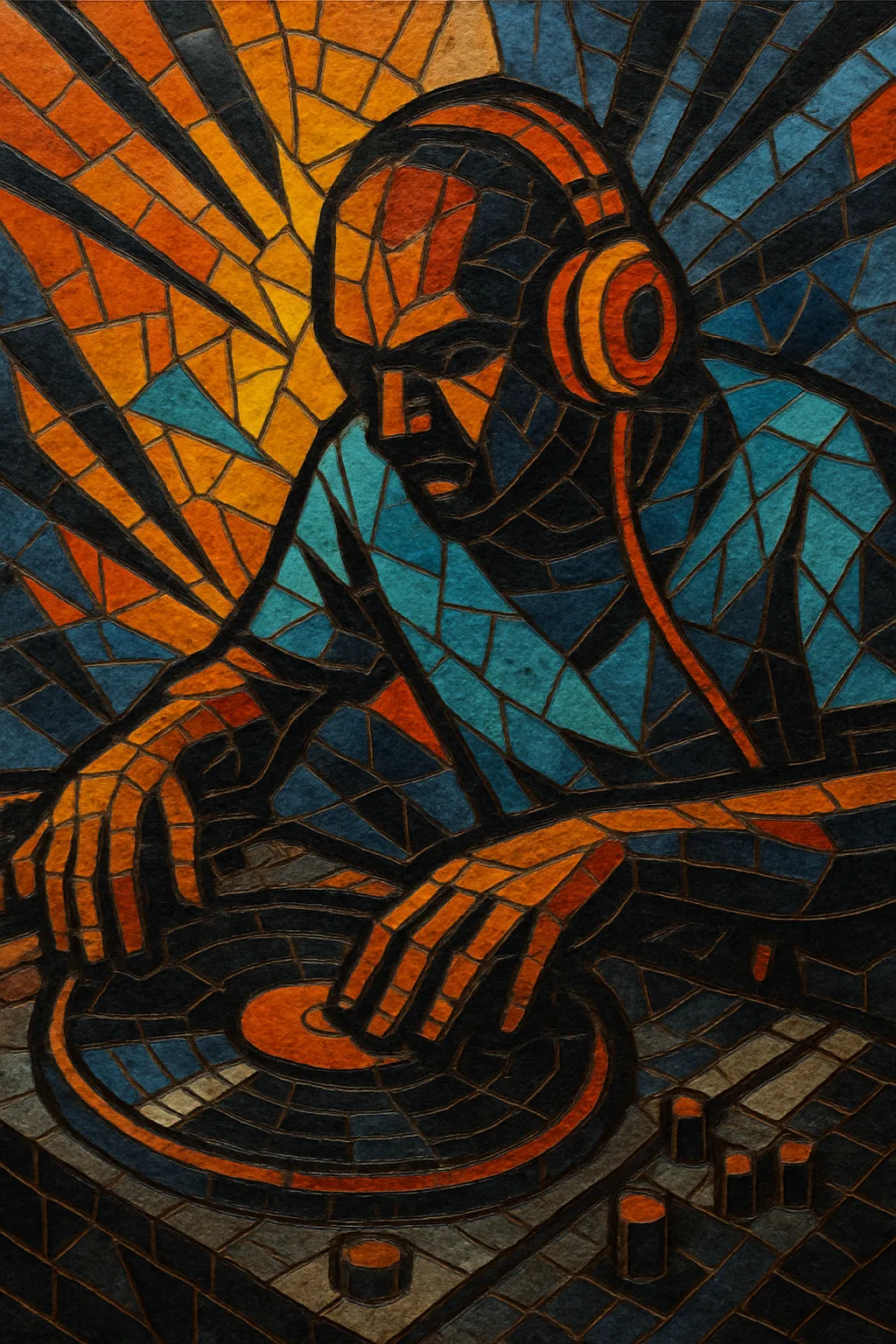Bassline (often called bassline house or Niche) is a UK-born, high-energy offshoot of UK garage built around a driving 4x4 kick pattern and huge, modulated sub-bass riffs.
Typically sitting around 135–140 BPM, tracks use swung garage percussion, choppy R&B or pop vocal cuts, and bright organ or synth stabs, all arranged for rapid-fire, DJ-friendly drops. The signature is the wobbling, LFO-driven bassline that converses with the drums in tightly looped 8- or 16-bar phrases.
Culturally, the style is rooted in northern England club culture (notably Sheffield’s Niche), with MC-led sets, quick blends, and a focus on dancefloor tension-and-release.
Bassline emerged in the early 2000s in the United Kingdom, particularly in Sheffield, Leeds, and Birmingham. It evolved from the 4x4 side of UK garage, inheriting the swing and vocal science of garage while emphasizing harder, wobbling low-end inspired by sound system culture and contemporaneous bass-centered styles. Sheffield’s Niche nightclub became synonymous with the sound, lending bassline its regional nickname “Niche.”
By the late 2000s, bassline crossed into national charts and mainstream radio. T2’s “Heartbroken” (2007) and H Two O’s “What’s It Gonna Be” (2008, with Platinum) showcased the genre’s pop-cut vocal chops and monumental bass drops, propelling the sound beyond its regional base. DJ Q’s productions and sets on BBC Radio 1Xtra further codified its aesthetics and spread.
As the scene grew, clubs associated with bassline came under increased scrutiny, culminating in high-profile police actions and venue closures. This displaced the community across other UK cities and online platforms, where the sound continued to mutate. Producers in Birmingham, Bradford, and Leeds pushed darker, more contorted bass design while retaining the genre’s 4x4 momentum.
From the mid-2010s, a new wave of artists invigorated bassline on SoundCloud and YouTube, intersecting with broader UK bass trends. Artists like Darkzy and Notion introduced a tougher, festival-ready edge, while a “bassline rap” sensibility rose in the North (e.g., Bradford’s contemporaries). The genre’s DNA fed into UK jackin and bass house, yet core bassline nights and mixes still celebrate the original Niche balance of soulful vocals and seismic low-end.
Work at 135–140 BPM with a steady 4x4 kick. Use swung hi-hats and shuffling garage percussion to keep the groove elastic rather than rigid. Aim for 8- or 16-bar phrases that set up a bass-led drop.
Design a dominant, modulated bassline using subtractive synths or FM. Apply LFOs to filter cutoff or pitch for wobble; layer a clean sine/sub for weight with a midrange layer for character. Use portamento (glide) for sliding riffs and automate distortion, EQ, and filters to create evolving drops.
Combine punchy, short kicks with crisp claps/snares on 2 and 4. Add swung closed hats, occasional triplet fills, and percussive one-shots for momentum. Sidechain the bass and melodic layers to the kick for clarity and pump.
Keep harmony minimal: simple minor-key stabs, organ hits, or filtered pads. The bass carries the hook; chords should punctuate the groove without competing in the low-mids.
Chop R&B/pop a cappellas or record catchy toplines. Use time-stretching, pitching, and formant shifts to create call-and-response with the bass. Place vocal teasers before the drop; reserve full phrases for breakdowns.
Intro (DJ-friendly drums and tease elements), build (filters rise, drum fills), drop (bassline hook front and center), mid-break (vocal spotlight or chord vamp), then second drop with variation. Keep transitions frequent to maintain dancefloor energy.
High-pass non-bass elements aggressively. Keep sub clean and mono; carve 40–120 Hz for the bass and duck conflicts with sidechain. Brighten drum transients, and tame harsh mid-bass with dynamic EQ or multiband compression.


